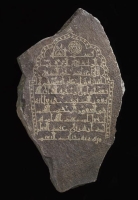
The Basalt Tombstone is an archaeological commemorative inscription carved on a gray basalt stone in excellent condition. It was discovered in Makkah al-Mukarramah Province in the Kingdom of Saudi Arabia. It measures sixty-nine cm in length and thirty-one cm in width. The tombstone is framed with an intricately designed scalloped arch and adorned with vegetal motifs, including a quadrilateral and trilobate rosette, imaginative ornamental elements, and a circular pattern enclosing a beautiful st...
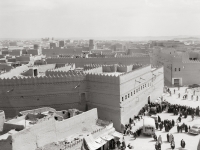
Khreimes Guesthouse, also known as al-Deira Palace, is a historical landmark in the old city of Riyadh . Situated on the northern side, directly opposite Qasr al-Hukm, it was constructed during the reign of Founding King Abdulaziz Bin Abdulrahman Al Saud. Commissioned by the King, the guesthouse served as a headquarters for government hospitality, complementing the role of Thulaim Palace. The establishment of guesthouses and offering hospitality and assistance have been a tradition of the Saudi...
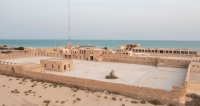
According to history books, Gerrha does not extend beyond the geographical area currently covered by the Eastern Province , in the Kingdom of Saudi Arabia, which is along the eastern coast of the Kingdom on the Arabian Gulf, specifically between the part known today as Half Moon Bay to the north and the historical port of al-Uqayr to the south. Gerrha City is one of the lost historical cities, such as Iram of the Pillars and Ubar. It was built upon the remains of the Dilmun civilization. It had...
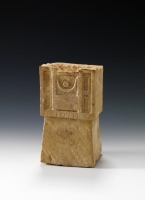
The Rectangular Limestone Censer is an archaeological artifact made of bright, finely polished limestone. It was discovered among a collection of findings from the archaeological Qaryat al-Faw , located southeast of Wadi ad-Dawasir Governorate in Riyadh Province , in the Kingdom of Saudi Arabia. The rectangular limestone censer has a square, elevated base with a rough surface and a large basin whose dimensions exceed those of the base, extending outward along its edges. The base's bottom a...
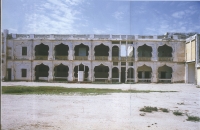
Makkah al-Mukarramah Province in the Kingdom of Saudi Arabia is home to several historical palaces, including: King Abdulaziz Palace in Hadda Located in Hadda Center, midway between the cities of Makkah al-Mukarramah and Jeddah . This palace witnessed the signing of an agreement by the Founding King Abdulaziz Bin Abdulrahman Al Saud with Sir Gilbert Clayton, the representative of the British government, to delineate the borders between Najd and eastern Jordan. Khuzam Palace Located in Jeddah Go...
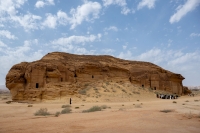
Al-Sanea Palace is distinguished by its large facade, the two shapes that form the five thresholds, and the inscriptions above the door. It represents a type of tomb and serves as a primary indicator of the Nabataean tomb style. Al-Khuraymat graves are considered part of al-Sanea Palace. The group of tombs at al-Sanae Palace is located south of Hijr Site in AlUla Governorate , within al-Madinah al-Munawwarah Province , west of the Kingdom of Saudi Arabia. It consists of two rock masses: the wes...
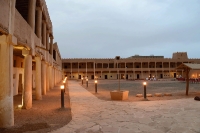
Al-Qishlah Palace , also known as Historical al-Qishlah Castle, is located in Hail City , northwest of the Kingdom of Saudi Arabia. It was constructed in 1941 by order of Founding King Abdulaziz Bin Abdulrahman Al Saud, and covers 19,000 m 2 . Al-Qishlah Palace was built in the Najdi architectural style using clay, mudbrick, stone, and gypsum decorations. It has a rectangular shape, extending lengthwise from east to west and widthwise from north to south. It features two floors and an open cour...
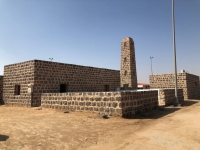
Al-Hadithah Mosque was established in 1956 during the reign of King Saud Bin Abdulaziz Al Saud . It is located northwest of al-Hadithah Center in al-Jawf Province , near the old Emara Palace. As one of the oldest heritage mosques in the region, it has been included in the Prince Mohammed Bin Salman Project for the Development of Historical Mosques . The mosque is distinguished by its architectural style; it was constructed using stones, roofed with concrete, and had an area of approximately 229...
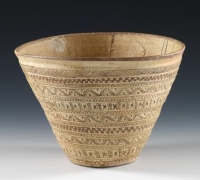
The Pottery Bowl Artifact is made of red clay and was discovered in Tayma Governorate , located in Tabuk Province , north of the Kingdom of Saudi Arabia. It dates back to the early first millennium BCE. The bowl is fairly pure, with both surfaces painted in a yellowish-white color. The decoration features opposing and alternating triangles with uncolored centers, formed by a zigzag double line intersected by horizontal lines arranged vertically. Inside each large triangle is a smaller colored t...
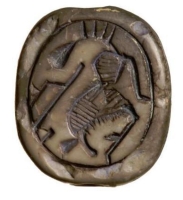
The Stone Seal from the Dilmun Civilization is an archaeological stone seal, carved and used for identification, featuring intaglio-carved designs. It was discovered in the Eastern Province of the Kingdom of Saudi Arabia. The discovery of the stone seal is part of the findings from archaeological surveys and excavations conducted by the antiquities and museums sector in Saudi Arabia over the years, as well as the discoveries of Saudi archaeologists and scientific expeditions. History of the sea...
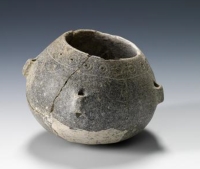
The Circular Soapstone Pot is an ancient carved artifact discovered on Tarut Island in the Eastern Province of the Kingdom of Saudi Arabia. Dating back to the third millennium BCE, it was used for cooking food. The pot is crafted from soapstone, with a design that widens in the middle and narrows at both the base and the top. It features a narrow opening ending in a plain, upright rim slightly raised above the body. The pot includes four mounted cylindrical handles, distributed ver...
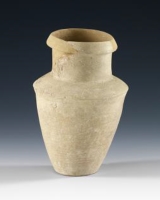
The White Pottery Jar from the Dilmun Civilization is an archaeological artifact crafted from pure reddish-white clay. It was discovered on Tarut Island in the Eastern Province . The lower part of the jar has a conical shape, narrowing at the base and widening toward the top. The upper section curves inward to form a narrow opening, topped by a tall neck that ends with an outwardly bent rim. Below the rim, it features a claw-like structure and a rounded, flattened base. The jar was used as part...